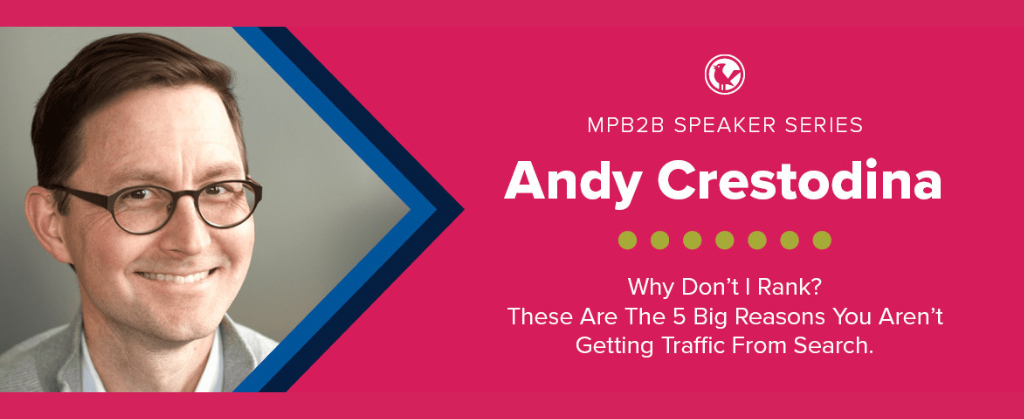
Think your on-page SEO is all about keywords and links?
Think again. Andy Crestodina (co-founder of Orbit Media) says there’s a key aspect to SEO ranking: User Interaction Signals.
These signals show Google that people are interested in your content. And there are ways to increase these signals, thereby increasing your SEO rankings.
Watch this 2022 excerpt from Andy’s B2B Forum presentation or read the transcript below.
And for more eye-opening secrets about SEO—including a full-day workshop with Andy—join your B2B marketing peers at B2B Forum in Boston this November. Tickets are available now.
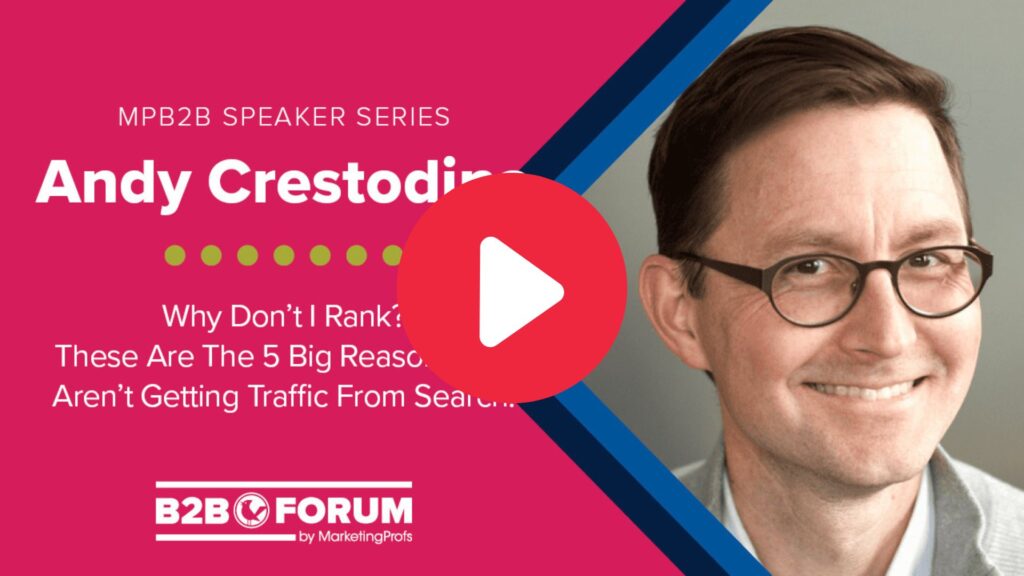
“
User interaction signals.
We sort of know this by reading [Search Engine] patents. There’s a lot of data on this. There’s some studies on this. Difficult thing to study because we don’t have access to everybody’s analytics accounts.
A user interaction signal is like, do people click on it when it ranks? That’s an interaction by a user. People who land on it, are they engaged with it? Or do they quickly bounce?
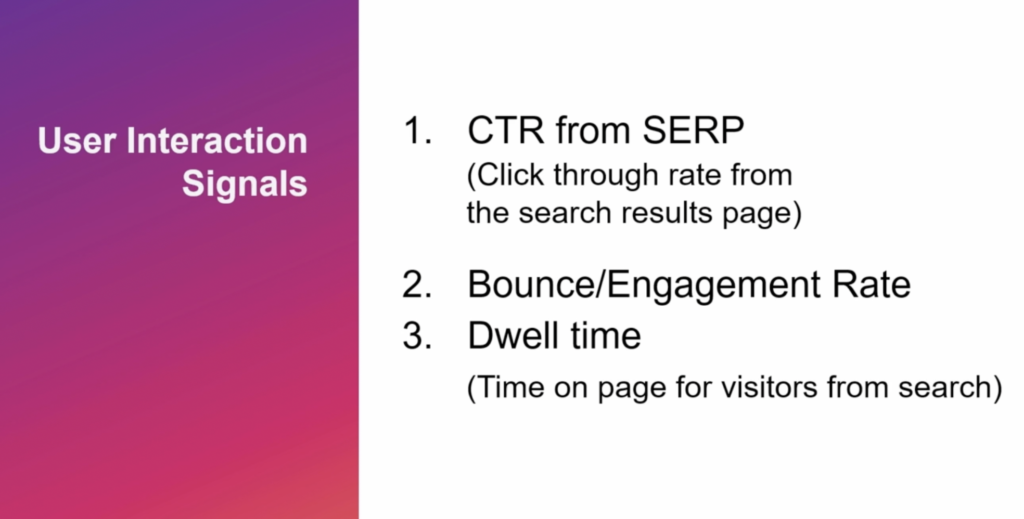
And dwell time: Do people who come to that page from search spend some time with the content? Or do they quickly hit the back button?
In my experience, I see no correlation between bounce rate and rankings. I could look at any of your analytics accounts and show the same thing to you. A lot of the high ranking pages on the internet have bounce rates of like 90, 95%.
So bounce rate, in our view, my view, my experience, has no correlation with search rankings. Bounce rate doesn’t matter. That’s not what Google cares about.
Time-on-page does seem to have a correlation with search rankings. Do visitors who land on this page spend time? How much time do visitors spend on the page.
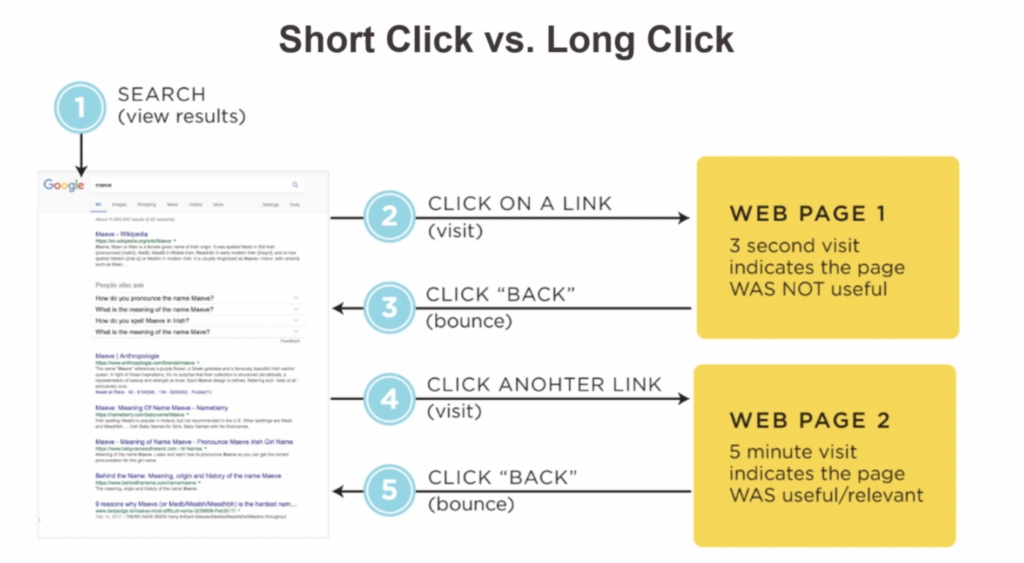
Imagine this: you search, you see search results. You click, you land on a webpage. Three short seconds later, you puke and hit the back button. Okay, that was a bounce. It was a short click.
You vomited on your keyboard, and now you’re back at the search results. You scan down, you click on another page. You spend five long minutes on that page, and then hit the back button.
That is also a bounce. You bounce from both these pages. But one of these pages had a long time-on-page.
It’s the short click versus the long click. It’s low dwell time versus long dwell time. (Dwell time is time-on-page from search. Visitor came from the search. Spent more time. The page has a high dwell time.)
And Google sees that. Google knows that. Google knows that they own the world’s number one search engine. They own the world’s number one browser. They own the world’s number one analytics platform. They own the world’s number one operating system.
You know Google definitely has this data, right? We all know that Google can tell if the person spent two seconds or five minutes on your webpage.
So I’m gonna now answer the question: how to get your visitors to stick around. Even with good authority and good relevance, if the dwell time is low, that’s gonna be bad for your search rankings.
So how do we get visitors to stay?
Formatting. Headers. Subheads. Bullet lists. Numbered lists. Bolding. Italics. Internal links. Multiple images. Video.
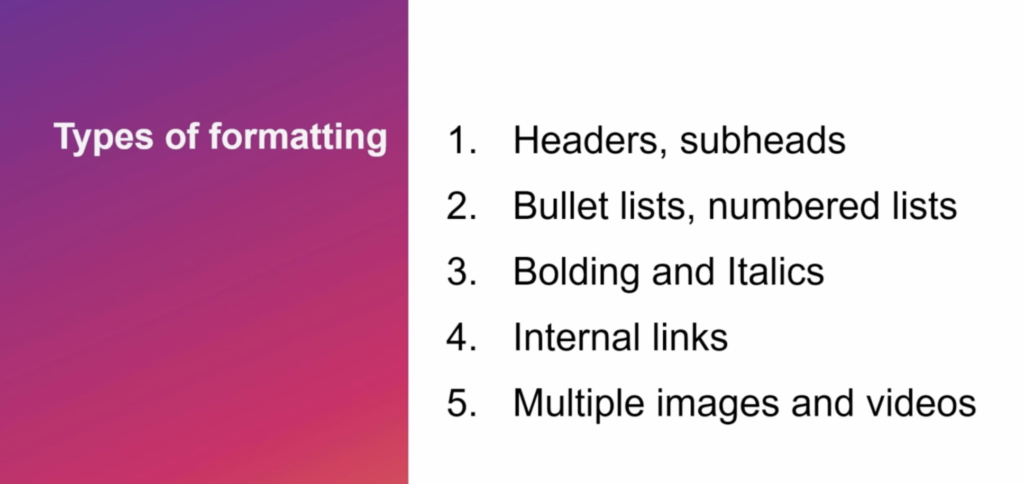
Let’s make this page very, very engaging!
We do a survey year of over a thousand bloggers. (Maybe some of you have taken it. Thank you, if you have.)
This is nine years we’ve done this survey. And the percentage this year of bloggers who say that they get strong results from marketing is 26%. That’s the benchmark. 26% of bloggers say that they get strong results from marketing.
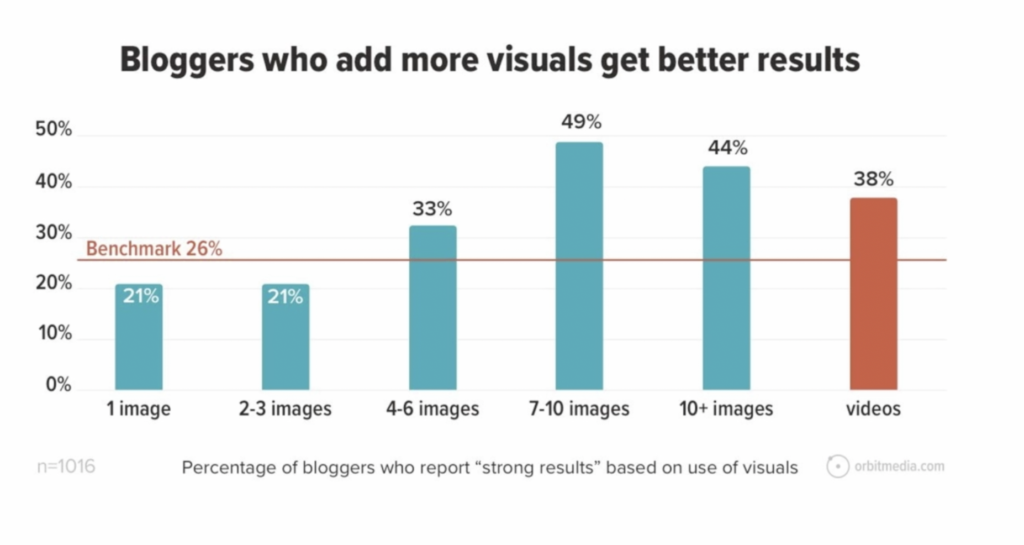
But the bloggers who use more images are far more likely to report strong results from marketing.
Right now, I’m showing you how visuals can improve search rankings by improving dwell time, by keeping the visitors to stay on the page longer.
Most bloggers—47% of bloggers—add two to three images. So you can see how those of us who create highly visual content are differentiated down here.
It’s a weird tip, right? Is that unexpected?
Pictures help you rank? Really?
Yes. Yes!
Because we’re trying to get the visitor to engage with the content. You don’t want them pogo sticking, clicking the back button quickly after landing.

Another way to do that is with videos. So there’s a video I put at the top of an article.
If you add tracking to a video and then correlate that with engagement?
So I’ve made two segments. (I created a tag, a Google tag. You don’t need to do this now in Google Analytics four, but in Google in Universal Analytics, you had to make a tag to show whether or not people engage with that video, right? You’re tracking the play of a video.)
So when I do that with event tracking, I can make segments in analytics. (You don’t need to do this. I’m just making the point that shows people who do and don’t watch the video.)
10% of the visitors on that page watch the video.
They’re 20% less likely to bounce.
And they spend three and a half times as many seconds on the page.
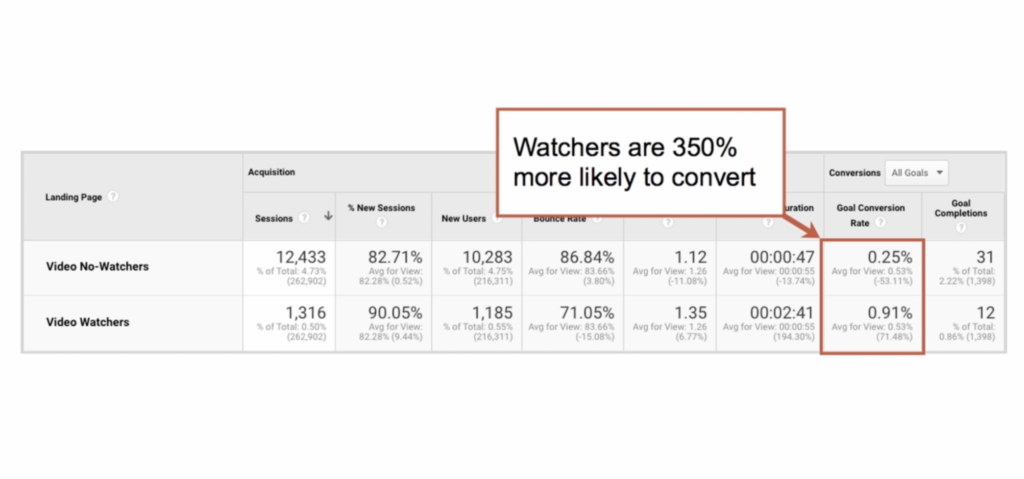
Video has a huge impact on engagement with content. So make an alternate version of the article just using a video.
It doesn’t matter if it’s your video or not. Any video that you add to a page from any source can improve dwell time.
And by the way, they also converted to higher rates.
Just now I explained how video actually can improve search rankings because it helps you send a positive user interaction signal into Google.
Published 7/12/23
B2B Forum is packed with marketing insights, strategies, and tactics taken from the real world experience of over forty industry experts, packaged into context you can actually put to use.
Join us in Boston for B2B Forum 2024 this coming November 12-14, 2024. Early buyers get B2B Forum tickets at their lowest rate, and discounted hotel rooms are available while they last.